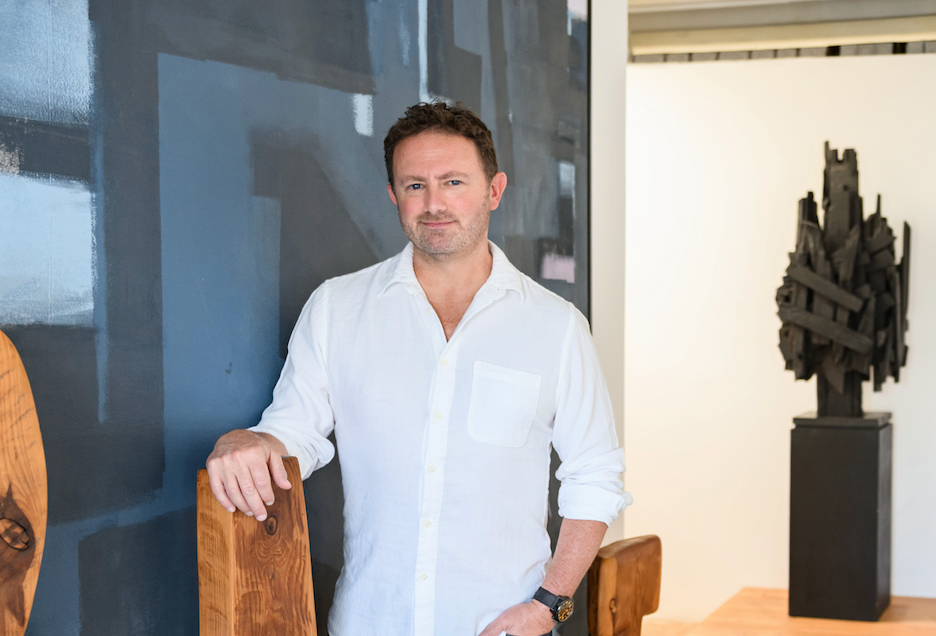Growing up, Jamie Bush had the best of both worlds—he was raised working on a Log Island dairy farm but was also exposed to the artsy glamour of Manhattan from family members in fields like fashion design and photography. “It’s that high and low of this can-do attitude, but also appreciating the finer things,” the architect and designer tells host Dennis Scully on the latest episode of The Business of Home Podcast. “That’s how I was brought up, and even in my office … the idea of making something better than how you found it [is essential]. I think that’s a lost sensibility in our culture. If everybody made things a little bit better than the way they found it, we’d have a much more beautiful environment.”
Bush studied architecture at Tulane University, then followed his passion for midcentury design to Los Angeles, where he worked for architects like Robert Hale and Marmol Radziner before opening up his own business with friends. They took on small projects and also made their own work by taking out cash advances on credit cards to flip a house while living out of the garage. Later, Bush got an itch for interiors and pivoted his practice, developing a style that has been featured in national magazines and has landed him on both the AD100 and Elle Decor’s A-List.
Today, he leads 23 employees. Jamie Bush + Co. is larger than it has ever been—and has grown to include three separate design teams, each with its own lead designer and projects. The beauty of a larger firm, he explains, is the flexibility it offers: “We’ve tried to manage the office [so that] we don’t have to lose people if a project or two stops. I think that’s important for the security of the staff.”
Elsewhere in the episode, Bush talks about how his short time working for Kelly Wearstler reignited his inspiration, how the “mansion tax” has impacted the L.A. design scene, and what changes need to be made in the design education system.
Crucial insight: As someone who has worked in both architecture and interior design, Bush noticed how the latter sometimes gets more respect and offers an easier way to make a living. “There are multiple ways of billing, and it’s less contentious [in that] the liability is less for failures of structures or waterproofing details—our liability of disaster lessens as an interior designer,” he says. “This is terrible to say, but I do feel that clients sometimes treat interior designers better than architects. … The things that the clients are paying for [with] an interior designer are more tangible: They can see that wallpaper they just paid for. They can’t see that higher grade of insulation in the wall.”
Key quote: “I really approach this as a service business, because without that, we wouldn’t be in business. It takes a thick skin to be able to manage different personalities, put your own agendas aside, understand the motivation of why people want to make certain decisions or do certain things—[to] really get into the psychology of it and try to be compassionate at the same time.”
This episode is sponsored by Loloi. Listen to the show below. If you like what you hear, subscribe on Apple Podcasts or Spotify.
The Thursday Show
BOH executive editor Fred Nicolaus and host Dennis Scully discuss the biggest news in the design industry, including another retail bankruptcy, why donating furniture is so challenging, and a look at how designers dress. Later, Rob Van Varick of Michael Graves Design joins the show to talk about the company’s new accessibility collection with Pottery Barn.
This episode is sponsored by Surya. Listen to the show below. If you like what you hear, subscribe on Apple Podcasts or Spotify.





























